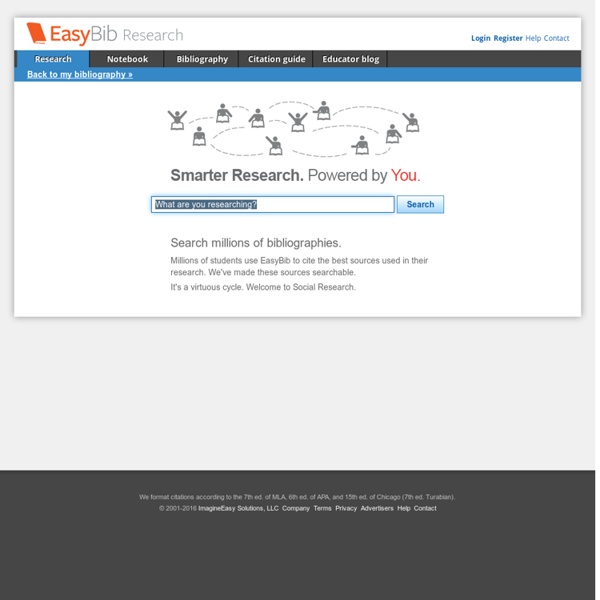



ScienceOpen Yeaaah! Citation Generators and much more :DD Gapminder: Unveiling the beauty of statistics for a fact based world view. Math Cats is A+ Learning Fun | Cat Videos CATVIDEOS.COM brings you the best and most entertaining videos, photos and stories about cats, kittens and the people who love them. Join our community by submitting your own videos, photos and comments about your cat family. Ingenious Website Uses Cats to Teach and Explain Math Concepts To instill a love – yes, a love – for math in children, and folks of all ages, educator Wendy Petti, created the website MathCats.com and packed it with math games, crafts, art, and story problems – featuring cats. MathCats.com has been online and engaging children, teens, parents and educators for quite some time now. The MathCats.com website has received many recommendations and accolades, including one from Engineering Education Service Center in its "Resources for Women in Science and Engineering” : "Teacher/mother Wendy Petti has created a wonderfully engaging and visually striking site that brings mathematics to life through math-related art, crafts, games, facts, and more.
6 of The Best Web Tools for Organizing and Managing Citations, References and Bibliographies April 1, 2015 One of the onerous parts in essay and academic writing is the bibliography section. Managing, organizing and citing references can sometimes be a real challenge especially if you don't keep track of what and who you cite. The last thing you would want after a strenuous writing task is a messy bibliography with one reference missing page numbers the other needs publication date or, worse of all, having to go back to your sources to check for the source of that quotation you included in your conclusion. If you find yourself constantly grappling with problems such as these, the web tools below are absolutely something you might need to consider. These are some of the best applications for organizing, managing, and publishing bibliographies, citations and references. 1- Zotero "Zotero collects all your research in a single, searchable interface. EndNote gives you the tools you need for searching, organizing and sharing your research. 5- EasyBib
F1000 Specialists We're looking for users of F1000’s services who want to work more closely with us and our prestigious Faculty Members to help grow our community, and develop our services, to improve scholarly communication. If you're interested in turning a passion for science and the web into something you can get proper recognition for, we want to hear from you. We equally want to hear from you if you're keen to support and interact even more with any of F1000's services. Apply to be an F1000 Specialist To apply to be an F1000 Specialist, please complete and submit the form below. You will then be contacted by our Outreach Directors to discuss the role and what happens next. If you have any questions about being an F1000 Specialist please email community@f1000.com and our Outreach Directors will respond. F1000 Specialists will be official, local representatives for F1000 at their universities, hospitals and institutions. What you'll do as an F1000 Specialist: What you get in return:
Reference, Facts, News - Free and Family-friendly Resources - Refdesk.com Cobb County Math ESOL: Education World www.educationworld.com This site may be very familiar to many of you. It is an in depth site with lesson plans, strategies, links, and many other options. I recommend that you spend some time getting to know the site. Education World offers so much in all the content areas. 1) Math Cats Math Chat: ( The link to this is currently in the Professional Development link. Links I have looked at and liked: i) Winter Math ( ii) Math Magic ( iii) Functions RW ( iv) Math Heroes ( v) Math Writing ( These are only a few of the links under Math Cats. This link is under “More Lesson Plan Features.” Here are some of my favorites: Rob
How Google Docs' research tool removes drudgery from reports and presentations You’re frantically racing toward a deadline to complete a multi-page report or slideshow presentation, but research is slowing you down. Not tracking down the information so much as the constant bouncing between your work document and web browser, and cycling through the confusing morass of open tabs to find that webpage or image you need. If you use Google’s free office suite, there’s an easier way—a built in research tool that lets you search for the information you need and easily add it to the Google Doc or Google Slide you’re working on without having to leave the page. Here’s how to get started. Access the research tool Google offers three ways to access the research tool pane. Unless you’ve accessed it via selected text, the first time you open the research tool it will display a list of topics based on the content of your document or slide. Everything This is the default search and casts the widest possible net across the ‘Net. Images Scholar Quotes Dictionary Personal Tables
Sweet Search
EasyBib is an intuitive information literacy platform that provides citation, note taking, and research tools that are easy-to-use and educational.
EasyBib is not only accurate, fast, and comprehensive, but helps educators teach and students learn how to become effective and organized researchers.
EasyBib is a service of Imagine Easy Solutions, a tiny company that makes big products. Learn more about us here. by mshaddd Feb 17